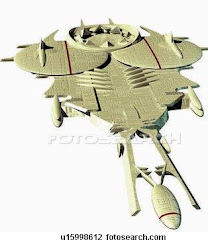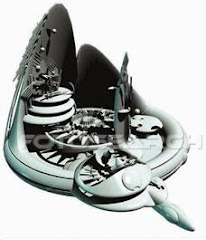Kohinoor Skyscraper Competition Unveils Two Green Towers
 The proposals incorporate an abundance of green building strategies and will harness alternative energy for the buildings’ essential functions, harvest rainwater, make use of solar technology, and provide abundant planters and green spaces to filter and freshen the air.
The proposals incorporate an abundance of green building strategies and will harness alternative energy for the buildings’ essential functions, harvest rainwater, make use of solar technology, and provide abundant planters and green spaces to filter and freshen the air. Both of Perkins Eastman’s designs juxtapose modern technological advancements with traditional Indian culture - colorful terracotta stones shine alongside photovoltaic cells. One takes the form of a towering 33 story spire with a two-story retail base, while the other is envisioned as a circular mid-rise topped with a verdant green roof.
A Shining Solar Skyscraper for Shenzen

The 49 story tower will rise over the central business district of Shenzhen, a thriving economic center on China’s southern shore. The flowing outer skin of the building will be lined with photovoltaic cells and will feature mechanisms to increase wind resistance, shade the interiors from sunlight, provide natural ventilation, and display multimedia banners



The tower, functions will be separated in three sections - business offices at the top, public areas on the bottom floors and a central zone for semi-public functions likes conferences, business meetings and gardens. The passively designed outer skin of the structure will help regulate inside climate and be powered in part by solar and wind energy.


| Chess pieces | ||
|---|---|---|
| King | ||
| Queen | ||
| Rook | ||
| Bishop | ||
| Knight | ||
| Pawn | ||
Pawn

The pawn is the weakest and most numerous piece in the game of chess, representing infantry. Each player begins the game with eight pawns, one on each square of the second rank from the view of the player.
Pawns are differentiated by the files on which they currently stand. For example, one speaks of "White's f-pawn" or "Black's b-pawn" or, less commonly, "White's king's bishop's pawn" or "Black's queen's knight's pawn".
 Pawn - the 'servant' - can move forward 1 space (2 if it it the very first move that pawn is making). Only captures diagonally. Can be promoted to any other piece (other than a king) if it reaches the 8th rank. Worth 1 point.
Pawn - the 'servant' - can move forward 1 space (2 if it it the very first move that pawn is making). Only captures diagonally. Can be promoted to any other piece (other than a king) if it reaches the 8th rank. Worth 1 point.
Knight
The pawn is the weakest and most numerous piece in the game of chess, representing infantry. Each player begins the game with eight pawns, one on each square of the second rank from the view of the player.
Pawns are differentiated by the files on which they currently stand. For example, one speaks of "White's f-pawn" or "Black's b-pawn" or, less commonly, "White's king's bishop's pawn" or "Black's queen's knight's pawn".
Movement
Bishop

A bishop a begins the game with two bishops. One starts between the king's knight and the king, the other between the queen's knight and the queen.
The piece's deep groove symbolizes a bishop's (or abbot's) mitre. The groove originates from the original form of the piece, an elephant (the groove represented the elephant's tusks). This groove was interpreted differently in different countries as the game moved to Europe; in France, for example, hence in France the bishop is called "fou" (the fool).
Rook

A rook , borrowed from persian is a piece in the strategy board of chess. In the past the piece was called the castle, tower, marquess, rector, and non-players still often call it a "castle". Each player starts with two rooks, one in each of the corners nearest their own side.
rock
Queen

Queen - worth 9 points, and can move horizontally, vertically, or diagonally as many spaces as are allowed on the board The queen is the most powerful piece in the game of chess. Each player starts the game with one queen, placed in the middle of their first rank next to their king. The white queen starts on a white square, and the black queen on a black square, thus the "queen gets her color" or "queen on color".
Movement
King
 King is the most important piece. The object of the game is to trap the opponent's king so that he would not be able to avoid capture (checkmate). If a player's king is threatened with capture, he is said to be in check, and the player must move so as to remove the threat of capture. If he cannot escape capture on the next move, the king is said to be in checkmate, and the player which owns that king loses the game
King is the most important piece. The object of the game is to trap the opponent's king so that he would not be able to avoid capture (checkmate). If a player's king is threatened with capture, he is said to be in check, and the player must move so as to remove the threat of capture. If he cannot escape capture on the next move, the king is said to be in checkmate, and the player which owns that king loses the game






.jpg)
.jpg)

.jpg)













